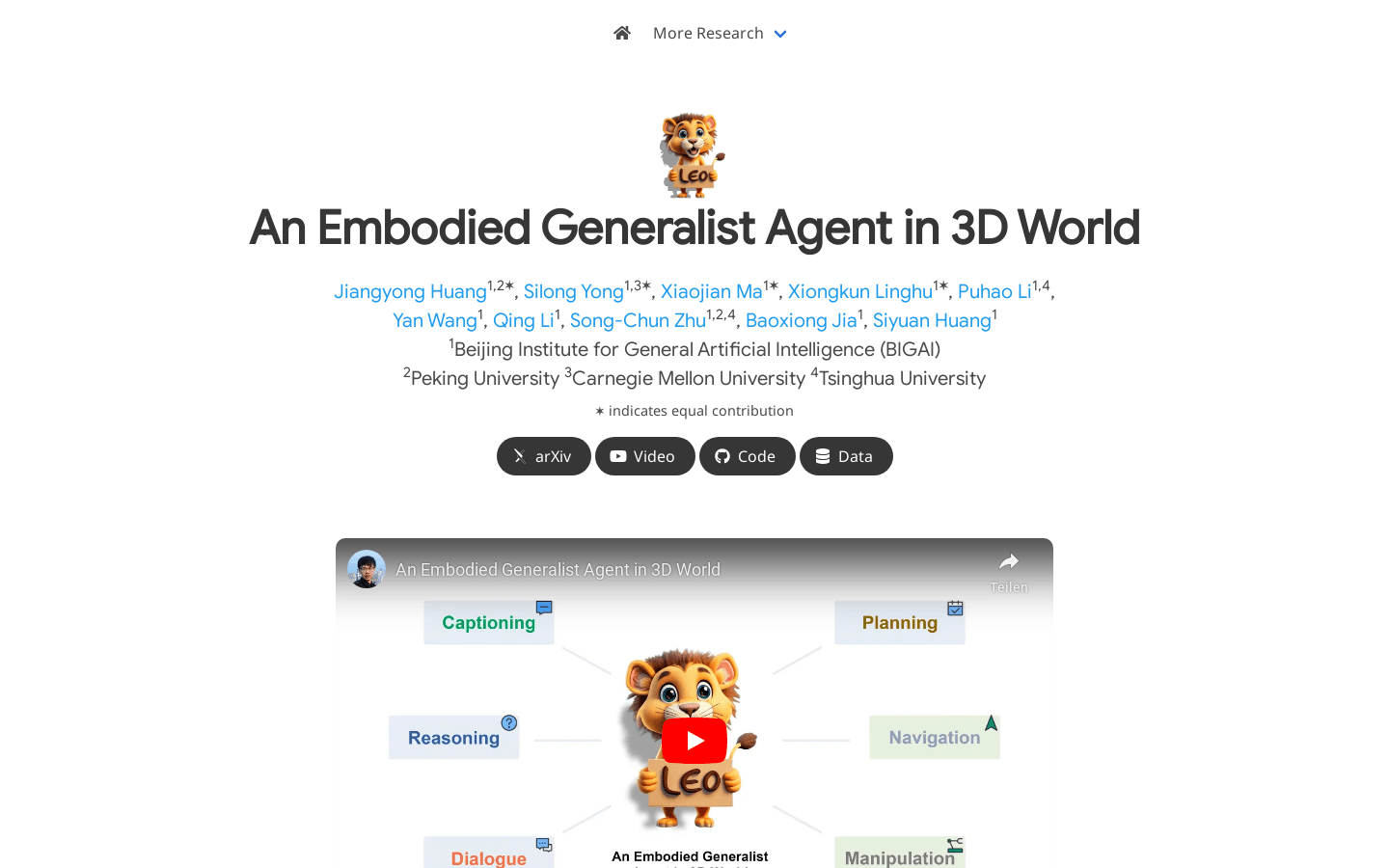










Introduction to LEO: A Comprehensive Multimodal AI Agent
LEO represents a cutting-edge multimodal, multi-task all-in-one agent that leverages large language models to perform complex operations in the 3D environment. Designed for versatility and advanced functionality, LEO integrates perception, localization, reasoning, planning, and execution capabilities, making it a powerful tool for handling diverse tasks in three-dimensional space.
Training Architecture
The development of LEO is based on a two-stage training framework:
- Stage 1: 3D Visual-Language Alignment – Establishing robust connections between visual data and language understanding to enable effective communication and comprehension in 3D environments.
- Stage 2: 3D Visual-Language Action Instruction Tuning – Fine-tuning the system’s ability to interpret and execute action-based commands, ensuring precise task execution in dynamic 3D scenarios.
Data Collection and Curation
A meticulously assembled large-scale dataset has been created specifically for LEO, encompassing both object-level and scene-level multimodal tasks. This dataset is designed to challenge the agent’s ability to deeply understand and interact with complex 3D environments, providing a rich foundation for learning and adaptation.
Experimental Validation
Through extensive testing and evaluation, LEO has demonstrated exceptional performance across a wide array of tasks:
- 3D Captioning – Generating accurate textual descriptions of 3D scenes.
- Question Answering – Providing contextually relevant answers based on 3D visual inputs.
- Reasoning – Solving complex problems requiring logical deduction and spatial awareness.
- Navigation – Navigating through 3D environments with precision and efficiency.
- Robot Manipulation – Executing precise physical tasks in real-world robotic applications.
Target Audience and Applications
LEO is designed to serve a diverse range of users and industries who require advanced 3D processing capabilities. Its primary applications include:
- Researchers and Developers – For advancing AI research and creating innovative solutions in robotics and computer vision.
- Industry Professionals – In fields such as gaming, virtual reality, autonomous systems, and industrial automation.
- End-Users – For interactive applications in education, simulation training, and augmented/virtual reality experiences.
Core Features of LEO
The key functionalities that make LEO a unique solution include:
- Advanced 3D Perception – Capable of interpreting complex spatial relationships and visual data with high accuracy.
- Contextual Understanding – Combines linguistic comprehension with visual analysis to provide meaningful interactions.
- Adaptive Learning – Continuously improves performance through exposure to diverse datasets and real-world experiences.
- Efficient Task Execution – Optimized algorithms ensure rapid processing and accurate results across multiple task types.
Why Choose LEO?
LEO stands out in the field of AI agents due to its comprehensive capabilities, robust training framework, and adaptability across various domains. Its ability to handle multimodal data and execute complex tasks makes it an indispensable tool for both academic research and industrial applications.
Future Directions
The ongoing development of LEO focuses on expanding its capabilities in real-time processing, improving interactional fluidity, and enhancing its adaptability to new environments and task types. Future updates aim to further integrate with edge computing and IoT devices, pushing the boundaries of AI in 3D spaces.
























